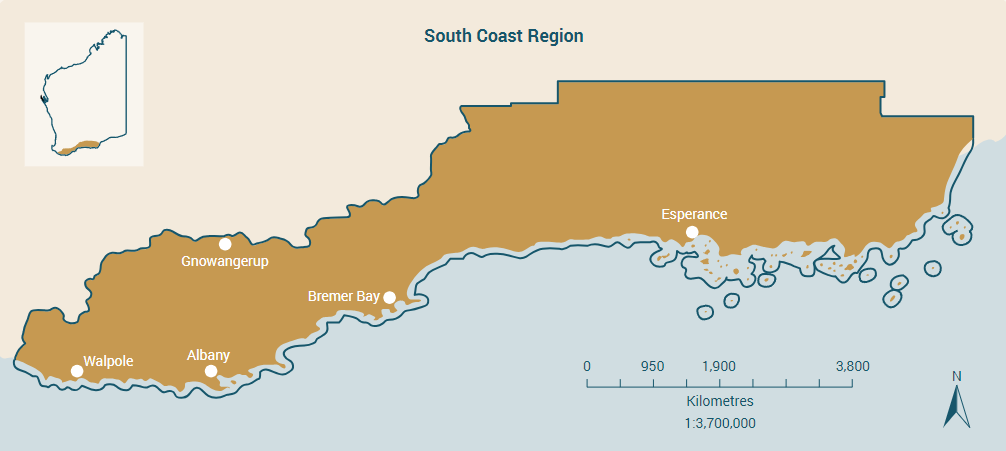An Australian environmental conservation organisation is seeking state government funding to establish environmental accounts that could inform biodiversity pilot projects, create jobs, and spur conservation efforts for the region.
The South Coast Natural Resources Management (NRM) programme on Wednesday published a presentation to establish a nature repair economy for the southern coastal region of Western Australia.
The NRM is one of a collective of independent organisations focussed on sustainable, long-term management of their specific region’s natural environment to create positive economic and social outcomes.
The South Coast NRM is currently seeking A$6 million ($3.8 mln) in state government funding to start the project, which would initially develop a regional natural capital environment account, the first of its kind in WA.
It would incorporate First Nations cultural values, and would involve completing assessments of the condition of the region’s natural environment, including vegetation, soil, water, and wildlife.
This would be collated to a publicly accessible online database platform.
Based on these assessments, up to five pilot ecological restoration projects would be established and owned by local organisation and businesses, and be supported by South Coast NRM and its partners.
The projects would use the data held in the account to demonstrate the financial value of their ecological restoration efforts to a new class of investors seeking natural capital products and assets, according to the plan.
Project examples in the presentation include valuing cultural assets and restoring habitats across Ramsar wetlands, blue carbon projects, and aggregated farm-scale initiatives.
BIGGER PICTURE
Luke Bayley, CEO of South Coast NRM, told Carbon Pulse the scheme was a test case to address the under-resourcing in conservation efforts in the region and the growing number of businesses looking for opportunities to invest in these efforts.
“We’re dealing with our own business needs, which are around trying to create a model for natural resource management conservation work that is bigger projects over larger timeframes, at the same time trying to connect our needs at a regional level with what potential clients are looking for,” he said.
Bayley hopes the proposal can help turn the South Coast region, and Western Australia more broadly, into “preferred destination for investment” in the federal government’s planned Nature Repair Market
The presentation said the group is taking a regional approach, given that single projects tend not to be as investible due to current scale and lack of integration in nature-based solution projects being delivered at larger sizes.
Bayley said South Coast NRM has spent the last 18 months consulting with local conservation groups, industry, government agencies, and corporations, on the potential opportunities of such a scheme, and the potential benefits it could bring.
He noted there was already confusion and distrust in carbon market schemes that needed to be addressed, and very few examples of existing natural capital accounts in Australia.
“There is a risk in all of this that sophisticated carbon companies or slick finance models … come into the regions and they don’t have the understanding of the dynamics and community and local business, and we lose opportunities,” he said.
“We see the opportunity for this region and for companies who have got direct relationships with this region … that do have standards about how they want to be contributing to the management of land and water resources.”
The South Coast region of WA extends more than 8.6 mln hectares across the state’s southern coastline, together with 8,000 ha of islands and 1 mln ha of state waters.
The South Coast NRM’s conservative initial valuation of the region’s natural capital is in the order of A$314 billion ($203.7 bln).
An Australian study published earlier this year funded by Conservation Volunteers Australia looking at two coastal and two freshwater wetlands in WA estimated they were worth billions in ecosystem services.
START SMALL
Bayley said the South Coast NRM is approaching the state government first for funding, as it wants the government to endorse and participate in the model of conservation management it is proposing, in the hopes it could be replicated in other regions.
“We want the state government to be part of this journey, and we want this to help inform their broader policy framework, so we think it’s really important that they step into this, and that’s why we’ve put this in front of them,” he said.
According to the presentation, and if government funding is successful, the natural account is expected to be completed and the pilot projects would be operational by 2026.
The cost of the project is expected to total some A$9.37 mln, with an expected business value creation across the region of around A$30 mln, and some 85-345 new regional jobs.
Bayley emphasised the test-phase nature of the scheme, saying he wanted to get the accounting and community participation aspects of the model right first.
“We don’t need large players to move in immediately, we can’t absorb hundreds of millions of dollars-worth of investment, we need to work in a stepwise process,” he said.
“If there’s one or two corporates or international companies that have got an interest, and want to do some progressive work and invest in some really high quality, large-scale projects, we only need a couple to start with because we need to build the workforce, we’ve got to test things, we’ve got to produce the evidence that demonstrates this model is actually effective.”
If it is effective, Bayley hopes that around 30 restoration projects could potentially be funded through corporate partnerships and natural capital investment.
South Coast NRM has partnered with the Western Australia Biodiversity Science Institute to ensure the project accounting methods and processes are transparent, alongside looking to methods developed by Accounting for Nature.
It has also partnered with Curtin University’s ARC Training Centre for Healing Country to ensure the natural capital metrics reflect and align with Indigenous cultural relationships with the land.
By Mark Tilly – mark@carbon-pulse.com
** Click here to sign up to our twice-weekly biodiversity newsletter **




